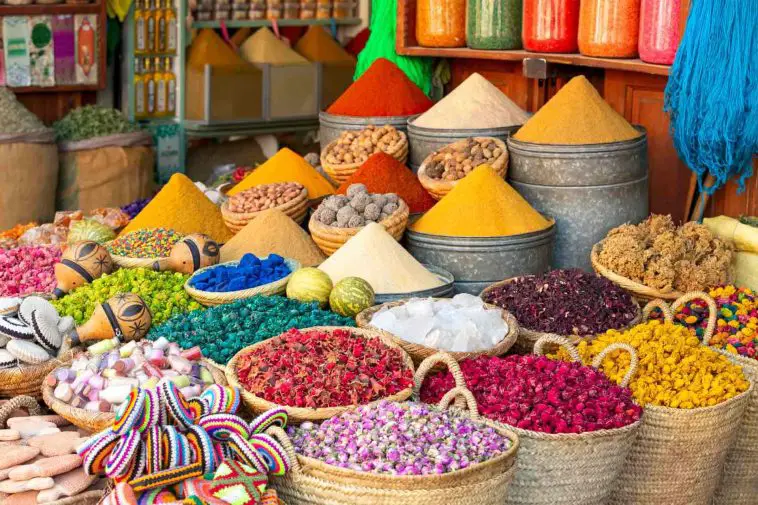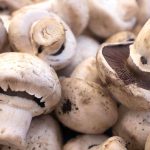Spices have always been more than just a way to enhance the flavor of food; they are a journey through cultures and histories. In this article, we explore 15 spice mixes from around the world, each with its unique story and taste.
Introduction to Spice Mixes
Spices are the essence of culinary diversity, offering a palette of flavors that transform ordinary ingredients into extraordinary dishes. Across the globe, each culture has developed its unique spice mixes, blending local herbs and spices into combinations that tell a story of their history, geography, and tradition. These mixes are not just about flavor; they are a testament to the creativity and cultural richness of cuisines worldwide.
Historical Significance of Spices
The history of spices is as rich and varied as the flavors they impart. In ancient times, spices were so valued that they were often used as currency and were a significant driver of global exploration and trade. The spice trade routes shaped economies and cultures, leading to the discovery of new worlds. Spices like black pepper, cinnamon, and nutmeg were at the center of political and economic power struggles. In various regions, spices have also held religious and medicinal significance, making them integral to cultural practices and beliefs. To understand more about the historical significance of spices, visit National Geographic.
Spice Mixes from Asia
Asia, with its diverse cultures and histories, offers a fascinating array of spice mixes:
- Garam Masala: A staple in Indian cuisine, Garam Masala is a warm, aromatic blend of spices like cumin, coriander, cardamom, and cinnamon. It’s used in everything from curries to soups, adding depth and warmth.
- Chinese Five Spice: This iconic Chinese blend combines star anise, cloves, Chinese cinnamon, Sichuan pepper, and fennel seeds. It’s known for its balance of the five flavor elements: sweet, sour, bitter, pungent, and salty.
- Curry Powder: A mix that varies widely across Asian countries, typically including turmeric, coriander, cumin, and chili. It’s used in a variety of dishes, from stews to marinades, imparting a rich, complex flavor.
Spice Mixes from Africa and the Middle East
The African and Middle Eastern regions contribute some of the most vibrant spice mixes in the world:
- Berbere: A cornerstone of Ethiopian cooking, Berbere is a fiery blend of chili peppers, garlic, ginger, and other spices. It’s essential in dishes like Doro Wat, a spicy chicken stew.
- Ras el Hanout: From North Africa, this mix can include over a dozen spices, such as cardamom, clove, cinnamon, and paprika. It’s used in tagines and couscous, adding a warm, aromatic flavor.
- Za’atar: A Middle Eastern mix of dried herbs like oregano, thyme, and marjoram, combined with sesame seeds and sumac. It’s versatile, used on meats, vegetables, and as a dip with oil and bread.
European and American Spice Blends
Europe and America have their own cherished spice blends:
- Herbes de Provence: A French blend, typically containing savory, marjoram, rosemary, thyme, and sometimes lavender. It’s used in roasts, stews, and grilled foods.
- Cajun: Originating from Louisiana, this spicy mix includes paprika, garlic powder, and cayenne pepper. It’s key in Cajun cuisine, used in dishes like jambalaya and gumbo.
- Creole Seasoning: Similar to Cajun but with more emphasis on herbs like oregano and parsley. It’s a staple in Creole cooking, known for its complex layers of flavors.
Latin American and Caribbean Blends
In Latin America and the Caribbean, spice mixes are as vibrant and diverse as the cultures themselves. These blends often feature a mix of indigenous and European influences, creating unique flavor profiles:
- Adobo: Popular in Puerto Rico and the Dominican Republic, Adobo is a savory mix of garlic, onion, black pepper, oregano, and turmeric. It’s used to season meats and seafood.
- Recado Rojo: A staple in Mexican and Central American cuisine, this blend includes annatto seeds, Mexican oregano, cumin, cloves, cinnamon, and allspice. It’s essential for traditional dishes like Cochinita Pibil.
- Jerk Seasoning: From Jamaica, this fiery mix contains allspice, thyme, scotch bonnet peppers, and cloves. It’s synonymous with Jamaican jerk chicken and pork.
Uncommon and Rare Spice Mixes
Exploring lesser-known spice mixes opens up new culinary possibilities:
- Shichimi Togarashi: A Japanese blend of seven spices, including chili pepper, orange peel, sesame seeds, and nori. It’s used to add heat and depth to soups and noodles.
- Dukkah: From Egypt, this nutty mix combines hazelnuts, sesame seeds, coriander, and cumin. It’s traditionally eaten with bread dipped in olive oil.
- Advieh: A Persian mix of rose petals, cinnamon, cardamom, and other spices, used in rice dishes and stews.
DIY Spice Mix Recipes
Creating your own spice mixes at home is simple and rewarding:
- Homemade Garam Masala: Combine cumin, coriander, cardamom, black pepper, cinnamon, cloves, and nutmeg. Adjust the proportions to suit your taste.
- DIY Herbes de Provence: Mix dried herbs like thyme, basil, rosemary, tarragon, and lavender. Store in an airtight container.
Health Benefits of Spice Mixes
Many spices used in these mixes are not just flavorful but also offer health benefits:
- Turmeric, found in curry powder, is known for its anti-inflammatory properties.
- Cinnamon, a common ingredient in many spice mixes, can help regulate blood sugar levels.
To learn more about the health benefits of spices, check out the World Health Organization.
FAQs
- How should I store spices?
- Keep them in a cool, dark place in airtight containers to preserve their flavor and potency.
- Can I blend spices at home?
- Absolutely! Start with whole spices, toast them lightly, and grind them for the freshest flavor.
- What’s the shelf life of homemade spice mixes?
- They can last up to 6 months, but for best flavor, use within 3 months.
- Are there any substitutes for hard-to-find spices?
- Yes, many spices have alternatives that can mimic their flavor. For example, lemon zest can substitute for sumac in a pinch.
In conclusion, exploring the world of spice mixes is a journey through global cuisines and cultures. Each blend tells a story of its origin, bringing unique flavors and aromas to our kitchens. Whether you’re a seasoned chef or a curious foodie, delving into these spice mixes can elevate your cooking and connect you to the rich tapestry of global culinary traditions.






Comments
Loading…